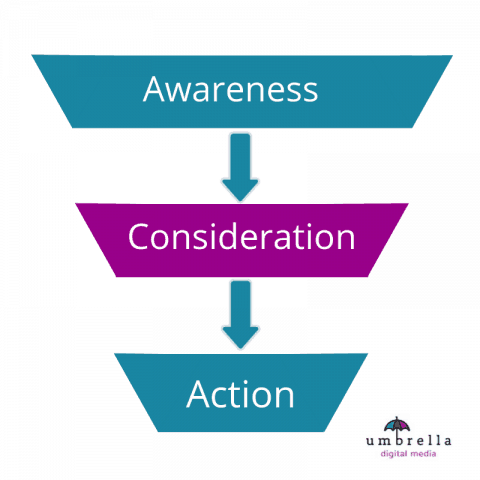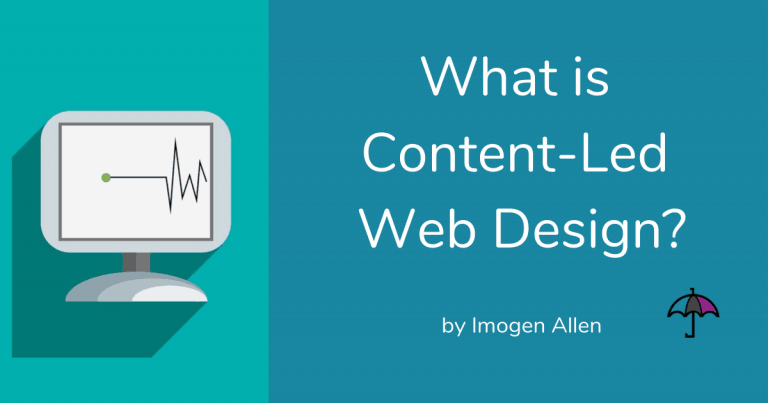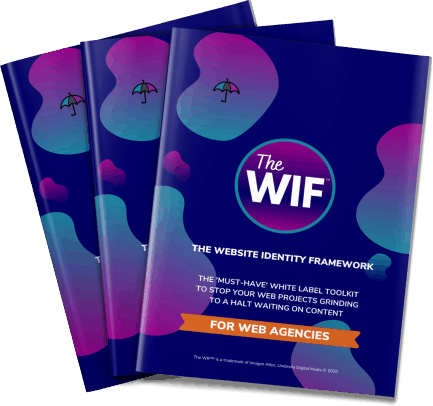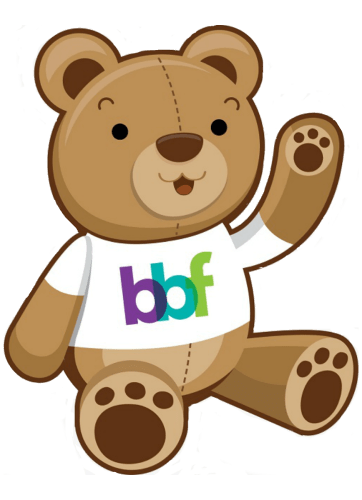Are you struggling with the right approach on your website and what to say?
Are you worried about putting yourself ‘out there’ online and over-thinking how others perceive you?
Do you feel foolish for what you are trying to say on your website?
Stop. Right. There.
This article will give you an insight into how you can stop the struggle with your website content right now. It will help you to get clear on how a human approach to content truly helps your prospects and concentrates on their needs and will shake off your own insecurities for good.
Let’s look at this another way.
Think of the last couple of websites you visited. With those websites in your mind, consider the questions below and see if the websites you visited met the needs of your search.
When you were searching for information:
- Was it easy to find?
- Was it helpful?
- Did you find out more information to help you further along with your problem?
- Was it clear what the business could do to help you with your problem?
- Could you find out what services they offered?
- Was it clear how you could buy their service?
In this article, we are going to explore why content is always the starting point for any website design or re-design. Keep in mind the answers to your own experiences above as we go through this article in more depth. We will consider:
- What is Content-Led Web Design?
- Why the Content-First Approach?
- How to Implement a Content-Led Focus on Your Website?
What is Content-Led Web Design and Why is it Important?
Content-Led Web Design is putting your prospects first with the emphasis on with customer-focused content before design.
The website layout, structure and user experience is then built around this content and brings your website customer’s journey to life. The purpose of your content is to guide your prospects through the following phases of their own buying journey.
- Awareness
- Consideration
- Action

Awareness
Awareness is the point at which a prospect first learns about your business or service. They may also only just be aware they have a problem which needs solving but may not know what that might even look like. In order to attract this awareness, website content needs to talk to your ideal prospects in a way which engages them and makes them aware of the possibilities of how they can move from their state of potentially needing help to the realisation there is a path to the transformation they desire.
In the awareness stage, the prospect simply needs to know if they are in the right place for the problem they have. The takeaways you want them to go away with are:
- Knowing what you offer
- Knowing how it will make their lives better
- Knowing what they need to do to buy it
Consideration
During the consideration phase, your content needs to help inform and educate your prospects. Building your website content around the needs of your prospective customers empowers them to make decisions which ultimately helps them move towards the transformation they desire.
Your content not only enables you to give guidance but also establishes trust, credibility and expertise for you and your business.
Prospects will be driven equally by fear and by logic. What would it look like for them if they don’t work with you in pursuit of the outcome and transformation they seek?
By building the right kind of content you will allay their fears, appeal to their logic and help them forge the path to their own success with your help. It helps a prospect decide if they are the right fit for you and vice versa; we are not everyone’s cup of tea nor should we try to be.
Action
The action phase does not necessarily mean conversion and the sale. Your website needs to have small achievable actions, or micro-actions, which in turn bring your prospect a step closer to working with you.
Clear calls to action are important on your site so a prospect knows what action you expect them to take. Don’t make them try and guess, make it crystal clear what their options are:
- Book a Call
- Download Here
- Buy Now
Whatever the action is for your prospect, make it crystal clear what you expect them to do in the next step when they are ready to take action.
Why the Content-First Approach?
Have you ever heard the phrase, ‘you can’t put a round peg in a square hole’? Building a template website and filling the lorem ipsum gaps with content is not the best way to approach a web project. Having the content at the start of your project shapes the layout and structure of the website in a way which enhances the customer journey on the site.
Our websites exist to talk to humans, so why are we not being human in our approach? In his book Marketing Rebellion, Mark Schaefer writes:
“There’s a hunger in our world for real intimacy and experience. Brands need to be more human and authentic. They should stop trying to be perfect. Human-centric brands should treat customers as friends, becoming an integral part of their lifestyle. Brands should be more like humans.
Approachable. Likeable. Vulnerable.”
As humans, we all want to belong, we all want to be heard. If we can focus our marketing on human needs, the rest will follow. The same principle applies to your website. Your website content should speak to the consumer you want to attract; the layout and user experience is at the heart of the design and to do this the content comes first.
What Does a Content-Led Approach Achieve?
The benefits to a content-led approach work both ways for you as a business and for your prospects.
- A content driven website guides your prospect through their buying decision.
- The content empowers the consumer and meets their demand for the information they seek and the questions they need answering
- The consumer becomes the hero of your website and your role is to be the guide. Writing your content becomes so much easier for you when the focus is on your prospect and not on you
- Content-led web design creates a better user experience as their needs are the forefront of the design
- A content-first approach truly shows you understand your audience and you are approachable, likeable and human
Content-led web design is all about creating a website around your content. Content with a human approach which…
helps
informs
transforms
your prospects and clients, taking them from the first stages of awareness of the problem they need help with and guiding them through to the outcomes they want to achieve.
How to Implement a Content-Led Approach on Your Website
Your website is meaningless if there is no engagement with your prospects and clients. Put in place the right foundations to create engagement by leading your website with content which helps, inform and starts building the foundations of a relationship.
Understand Your Audience
Start with understanding your target audience and who you are trying to help. Get clear on what matters to your audience and look at the potential problems they face and what they want.
Answer their Questions
Today’s consumer is in charge of the content they want to consume and they will go looking for it. With the internet making the world a smaller place with endless amounts of information available online, consumers research before buying. Just look at your own buying behaviour.
Back in 2011, Google coined the term Zero Moment of Truth or (ZMOT), the point of contact between a consumer and a business where at least 70% of the decision-making has been done. In some industries, this figure is even higher. In fact, if you’re in the car industry, Google recently published their research findings that indicate that 92% of car buyers research online before they buy That’s serious proof of the power of research on the internet.
As businesses, we must answer the questions that our prospects are looking for the answers to. We have so much of this data readily available at our fingertips from existing clients and prospects. We need to listen carefully about their worries, concerns and problems and give them the answers they seek.
Lead Generation
Offer helpful content in exchange for a prospect’s email address. Whilst our website needs to be focused on the consumer and end-user, it is the vehicle for us to collect leads too. After all, that’s what we are in business for. Creating a lead magnet is a great way to give prospects helpful and guiding information in exchange for their email address.
Build Relationships
Your aim as a business is to build relationships with your prospects and your clients. Building and nurturing relationships take time and trust. By providing value in your relationships, prospects will invest more of themselves in you over time. Your website is just the start of that relationship as prospects become aware of your brand, but your website also needs to be representative of the relationships you go on to have.
Mapping Your Website Customer Journey
Start with mapping out the content you need for your customer journey on the website even before a scratch of code is even written. Having your content ready first will dictate the best structure and user-flow for the website build itself. There is no need for fancy software to help you do this, a pen, paper and plenty of post-notes is the best way to start as you can move things around until you can map out the user experience you want.
Content Marketing
Once your website is up and running, your content journey is only just beginning. Consistently publishing good quality content, which answers the questions your prospects and clients have, will not only benefit the prospects you hope to attract but elevates your own knowledge and expertise.
The content you create on your website will pervade every moving part of your business. Content is the core of your customer journey as your prospects transition into clients and beyond. Not only does creating content help you be a better communicator but it is also a huge time saver. Having to answer the same questions over and over is time-consuming but having content at hand, ready to share with prospects and clients alike, is a win-win for you and them.
Content-Led Web Design in a Nutshell
What are the components of content-led web design? Here’s a recap:
- Web Design starts with and is led by content
- Map your customer content journey before deciding what your website looks like
- Lead with a human approach to nurture engagement
- Freely give added value throughout your content and lead magnets
- Develop and nurture relationships to build trust and likeability
- Write content to help, inform and transform by answering the questions prospects and clients have
- Be yourself and be helpful
At the beginning of this article, I asked you to think about your experiences on other websites. Let’s turn the tables and focus on your website. Imagine you are your prospect. Look at your own website content objectively and answer the following questions:
- Is it easy to find the information you were looking for?
- How helpful is the information on the website?
- Can you find out more information to help you further along with your problem?
- Is it clear what your business could do to help a prospect with their problem?
- Is it easy to find out what services you offer?
- Is it clear how a prospect could buy your service?
How Can I Help?
If you need help with a new start and a fresh approach for your existing website or are looking to develop your own content marketing strategy, then let’s have a human conversation.




